When carving stone, the sculptor removes everything that is not the statue. […] The art of revealing beauty lies in removing what concealed it. So too, Patanjali [in the Yoga Sutras] tells us that wholeness exists within us. Our work is to chisel away at everything that is not essence, not [true] Self. Judith Hanson Lasater
Wholeness is a state of authenticity in which what has been shed, in order to reveal truth, is what no longer serves our mental, physical and spiritual well-being. As most faith-based philosophies teach, we must return to the innocence of our childhood yet retain the wisdom of our adulthood. This resurrection of child-like innocence occurs when we turn our world upside, that is, when we enter the uncertainty brought about by inverting our body and mind.
Standing on our hands rather than on our feet, not only alters our perspective, but also stimulates the pineal gland found in the centre of the brain. Although modern medicine does not fully understand the function of the pineal gland, its secretions were viewed by ancient yogis as the fluid of immortality.
It’s through the awakening of the third eye and its corresponding pineal gland that we’re able to attain supernatural feats of telepathy, psychic vision and an intimate connection with [the divine]. Andye Murphy
Regardless of whether your rational mind can hear these more esoteric teachings, most faith-based traditions speak of a human-spirit connection. In the Yoga system, stimulating and cleansing the pineal gland and its corresponding third-eye chakra reinforce this connection with whatever “the divine” means to you. Contrarily, a dysfunctioning or closed pineal gland, and thus third-eye chakra, results in confusion, negativity and pessimism.
Suspend rational belief or disbelief for a moment and experiment with a new perspective by practising the following sequence of inversions. It is always beneficial to begin a yoga practice by sitting quietly for a few minutes. This silence and stillness allows you to bring your attention from the outside world of people and things into your inner experience. Here is where you will discover your truth. While you are sitting quietly, practice the following yoga actions and continue to hold them in your awareness with each subsequent pose of the inversion sequence.
YOGA ACTIONS:
1. Continue this yoga action that you practised in Part IV and Part V — With your awareness, sense the Rectus Abdominis muscle from its attachment at the centre of the pubic bone all the way up to the Xiphoid Process (bottom of the breast bone).
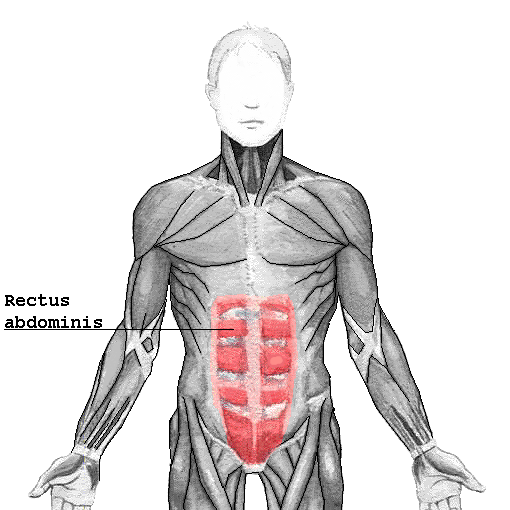
2. At the centre of the pubic bone, soften the Rectus Abdominis muscle letting it drop into the body. Notice the energetic lift up the Rectus Abdominus into the upper back and the broadening between the inner shoulder blades.
3. Take the INHALED breath into the space between the upper inner shoulder blades and feel them broaden away from the thoracic spine.
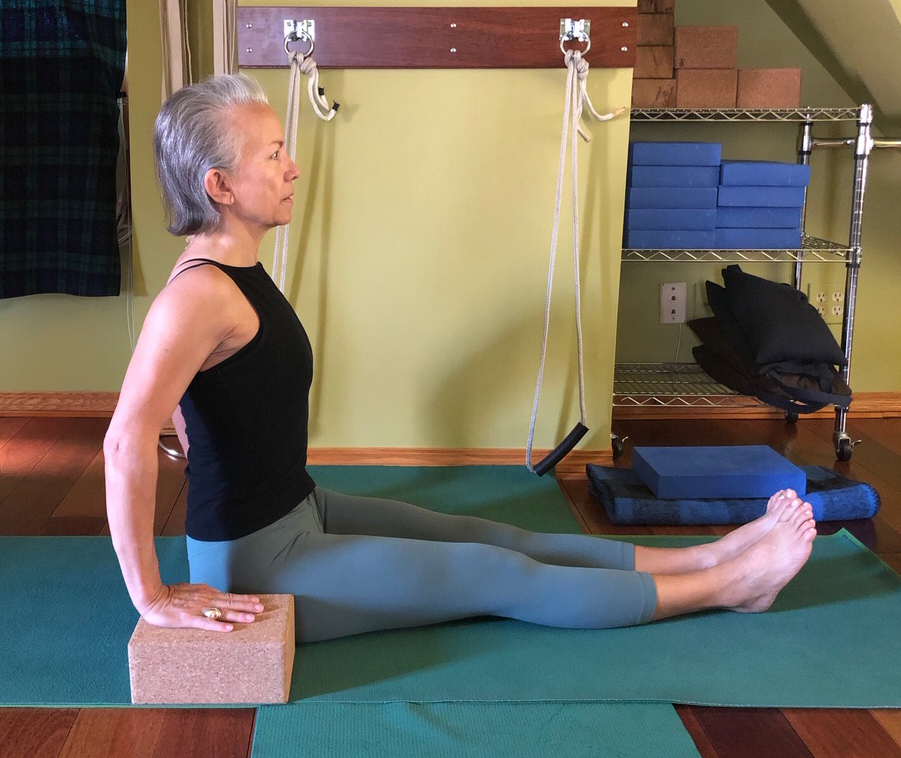
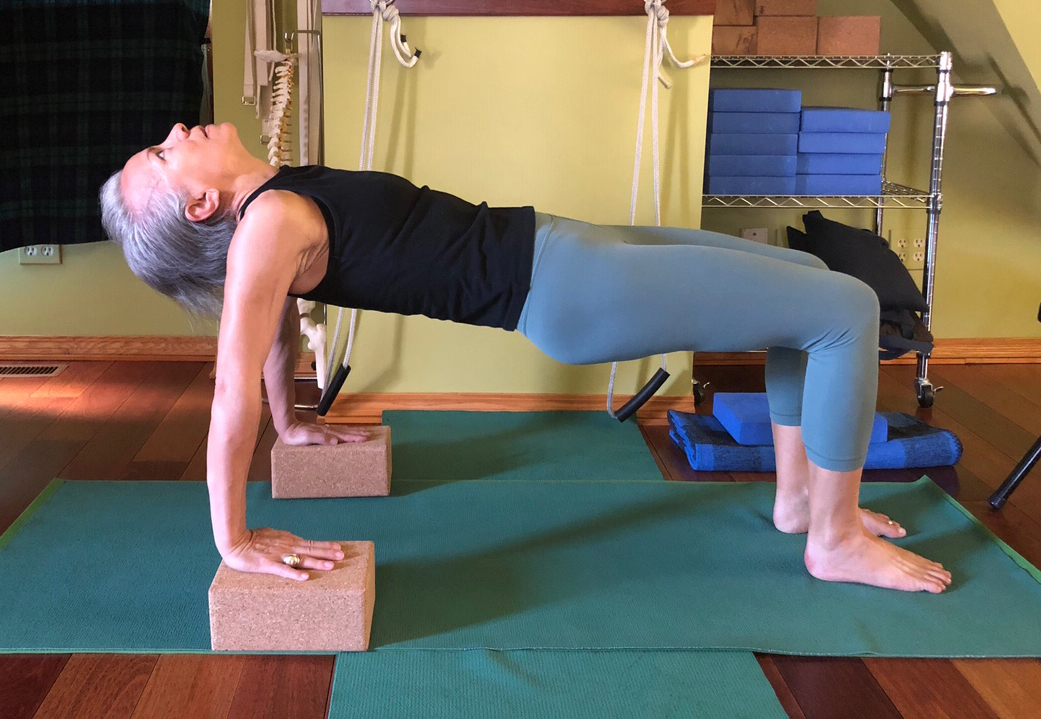
DANDASANA to ARDHA PURVOTTANASANA 5 Repetitions
– begin in Seated Staff pose, place blocks under palms if they do not fully contact mat
– INHALE and press into hands and feet to lift pelvis into Half Upward Plank (Upward Table Top) with bent knees.
– EXHALE and release back to Seated Staff pose.
– On 5th repetition, hold for 5 to 10 complete breaths.

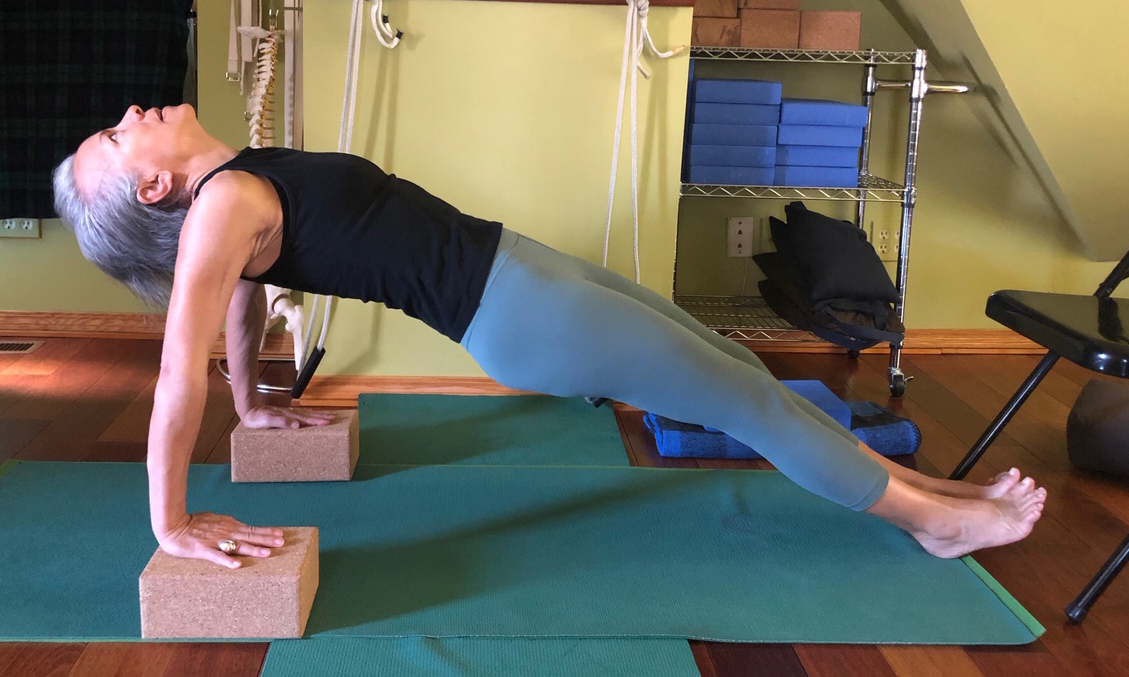
DANDASANA to PURVOTTANASANA 5 to 10 Breaths
– INHALE and press into hands and feet to lift pelvis into Upward Plank with straight legs.
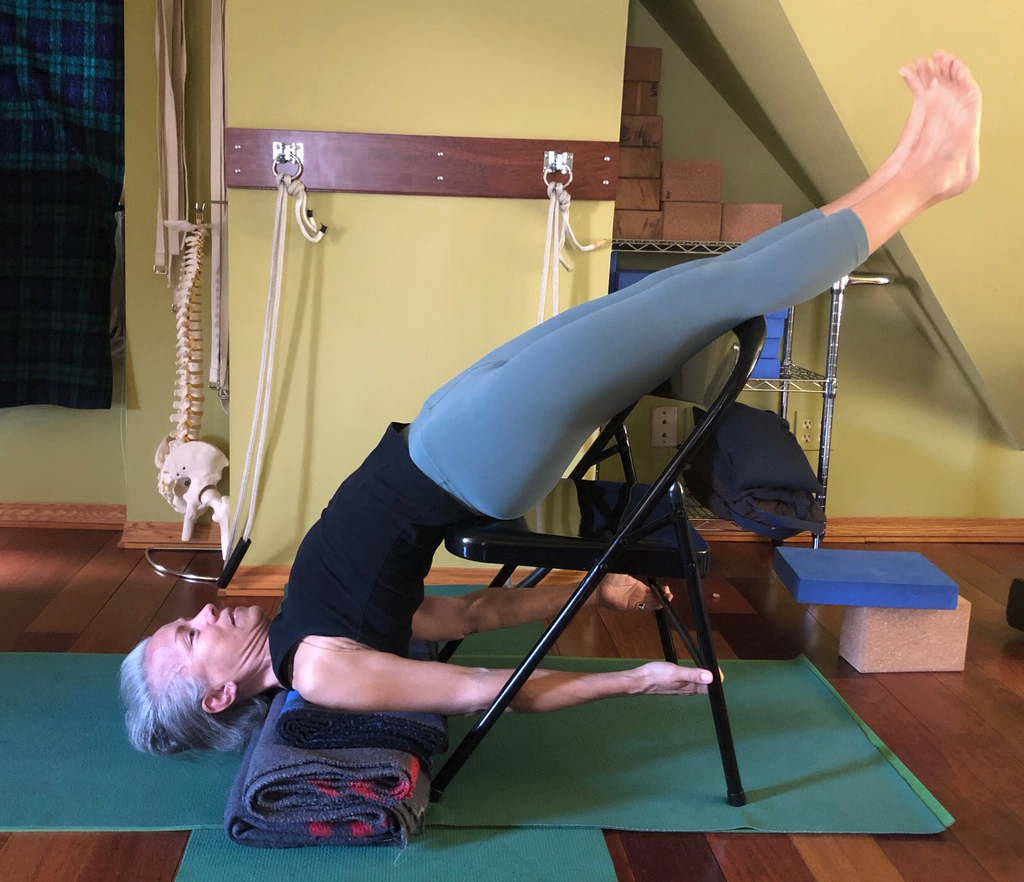
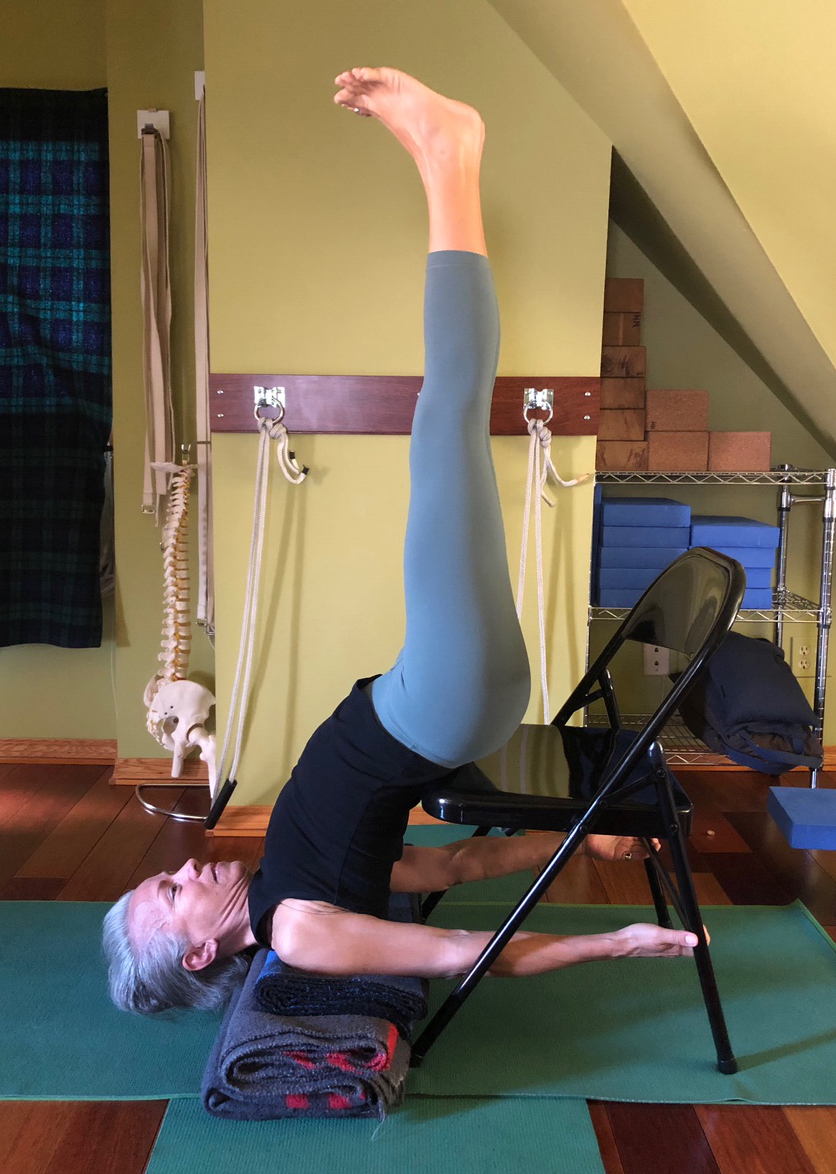
SALAMBA SARVANGASANA (Supported Shoulderstand) 20 Breaths each
– sit facing chair back with bent knees over chair back
– slide pelvis/sacrum toward front of chair seat and lower shoulders to three double-folded blankets, back of head to floor
– hands and arms reach through chair legs to back rung
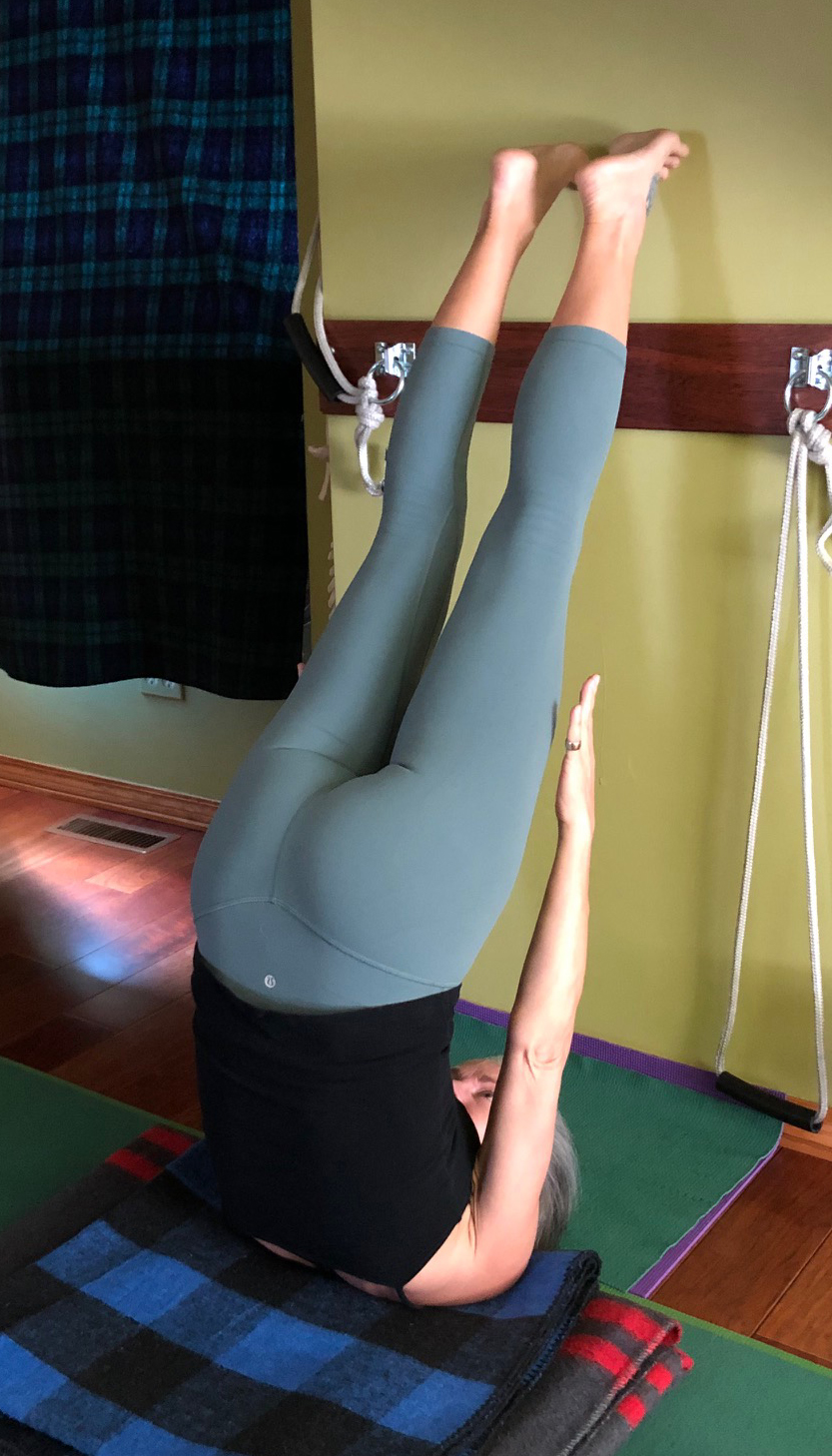
NIRALAMBA SARVANGASANA (Unsupported Shoulderstand) 10 to 20 Breaths
– three blankets under shoulders, head and neck free
– begin with hands into wall, then roll up to lift pelvis and legs toward wall
– raise one arm alongside thigh, then the other, then both
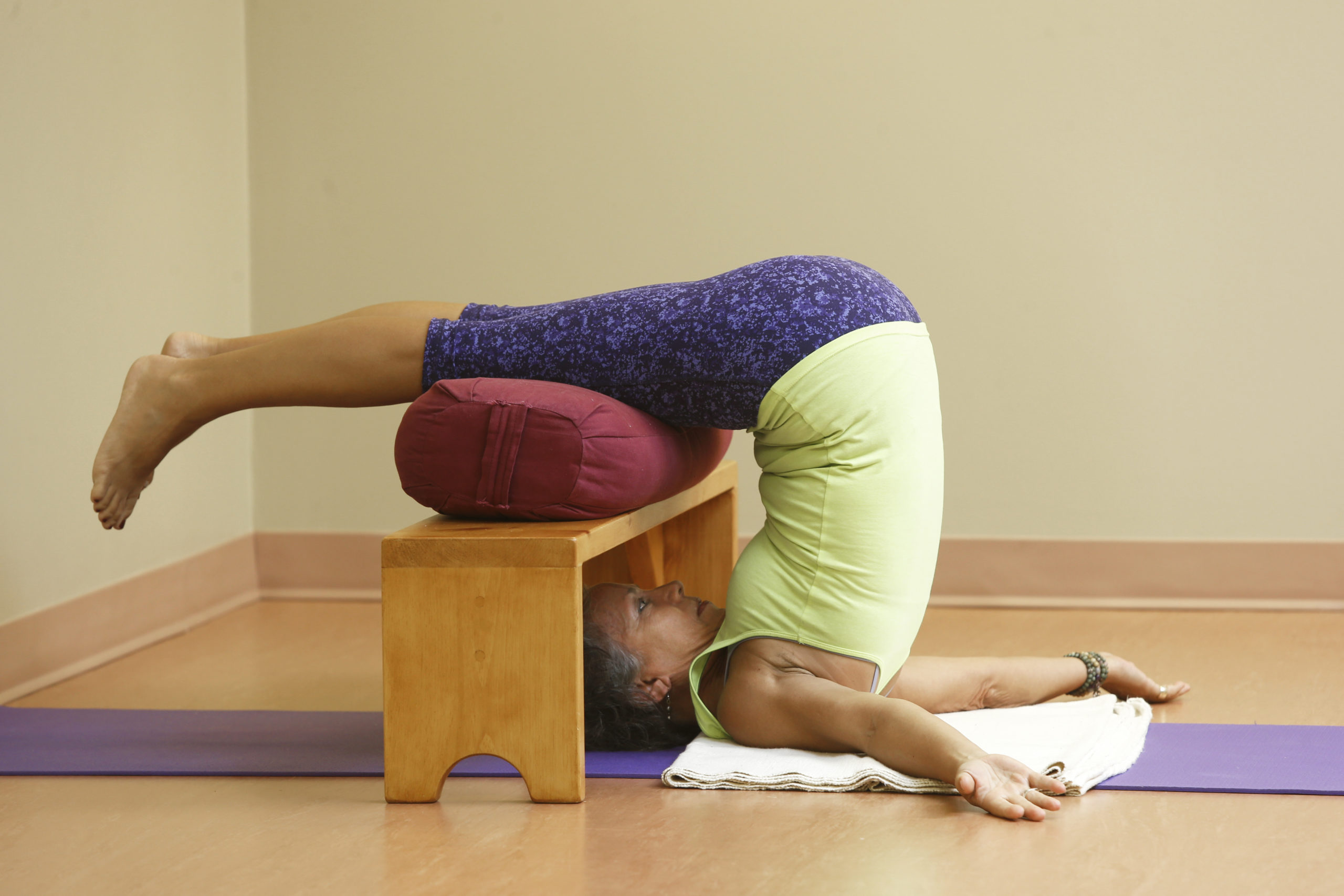
HALASANA (Plow) 10 to 20 Breaths
– substitute bench and bolster with chair seat or blocks under feet

SAVASANA (Corpse) 5 to 10 minutes
– arms overhead, rest one hand in other palm, weight on pelvis and lower torso
May our thoughts, words and actions express our inner divinity. Namaste.




